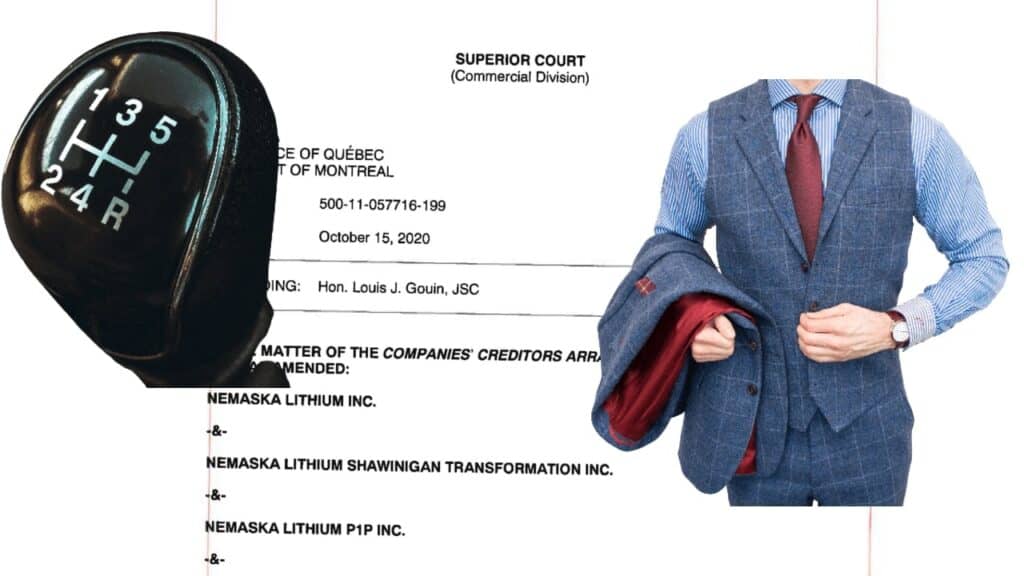We hope that you and your family are safe, healthy and secure during this COVID-19 pandemic.
Ira Smith Trustee & Receiver Inc. is absolutely operational and Ira, in addition to Brandon Smith, is readily available for a telephone consultation or video meeting.
If you would prefer to listen to the audio version of this Brandon Blog, please scroll to the very bottom of the page and click play on the podcast.
Vesting order and reverse vesting order
In a corporate insolvency case, a court may grant a vesting order, which authorizes the sale of a company’s assets to the buyer once the purchase price is paid. A vesting order vests ownership in the purchaser as a result of this court order. This is proof that the purchaser is entitled to transfer the assets into its name. No matter what insolvency process is used, this is the use of a vesting order.
In the past year or so, a new trend has emerged regarding the sale of the assets of insolvent companies as part of a restructuring under the Companies’ Creditors Arrangement Act (CCAA). That new trend is the use of a reverse vesting order.
In this Brandon Blog, I explain what a reverse vesting order is and why I believe its use will be a significant feature of Canadian firm restructurings in 2021 and beyond.
Reverse vesting order – A powerful tool for maximizing recovery in complex insolvencies
A reverse vesting order can be very useful in complex insolvencies. A timely recovery can benefit creditors, and the process can maximize recoveries for all parties. Reverse vesting orders are a good solution for an insolvent debtor corporation when:
- there are a large number of secured creditors, unsecured creditors and assets;
- all of the assets do not have an immediate buyer;
- the company is insolvent; and
- the company must deal with unwanted assets and a group of creditors in a particular way.
It is best used in a large-scale CCAA corporate restructuring but is not limited to that.

Reverse vesting order as a third restructuring tool
There have traditionally been two insolvency processes available to licensed insolvency trustees, insolvency lawyers, and company stakeholders. The two are (i) liquidating assets; and (ii) reorganizing companies. In general, assets are liquidated through either receivership or bankruptcy. Incorporated companies can restructure either under the provisions of the Bankruptcy and Insolvency Act (Canada) (BIA) or, for larger and more complex restructurings, under the CCAA. It is obvious that assets must be sold in order to liquidate them.
Sometimes, as part of a corporate restructuring, there are redundant and unwanted assets that can be sold to raise cash. The question is, what if the real value, especially a going-concern value of a company in a commercial insolvency case is not in its tangible assets. Rather, its real value lies in:
- the ability to operate in a specific industry and such licenses cannot be sold by their very nature and wording – think of the cannabis and nursing home industries as two examples;
- tax losses and tax attributes that can be monetized if the licensed insolvency trustee is also able to take over the shares; or
- being listed on the stock exchange and thus as a public company having a greater market value than a private corporation.
As a result, it is extremely difficult to realize any value from such assets.
What is the importance of the reverse vesting order? How a reverse vesting order works will tell you all you need to know about why it is important as a third restructuring tool. Under a reverse vesting order, a newly incorporated residual corporation is added as a party to the CCAA proceedings.
As part of the CCAA restructuring, the operating debtor company transfers undesirable assets and liabilities to the newly incorporated non-operating company. With its assets and liabilities selected by the purchaser, the debtor company holds only the desirable assets and liabilities, which means its common shares can be sold rather than the company’s assets. As a result, valuable permits, contracts, tax losses, and statutory authority are preserved, which can otherwise be lost in a disposition of assets.
Why is reverse vesting order important?
A reverse vesting order is an alternative to the traditional CCAA plans of arrangement, particularly for companies operating in highly regulated environments or when there is no value remaining after the realization of secured debt and the parties intend to continue the running of the debtor company.
A reverse vesting order is an alternative to the traditional CCAA plans of arrangement, particularly for companies operating in highly regulated environments or when there is no value remaining after the realization of secured debt and the parties plan to continue operating the debtor company.
By using a reverse vesting order, existing corporations, which have been streamlined to become solvent through an innovative solution, are transferred to new investors instead of desirable assets being sold through a court-approved sale. The debtor corporation that initially filed for bankruptcy protection under the CCAA can now be removed from the restructuring proceedings. There are certain unwanted assets and unwanted liabilities that are transferred to the newly incorporated residual corporation. There can then be asset sales allowing for some sort of distribution to creditors (either in a plan of arrangement or in bankruptcy) in order to allow some creditor recovery.
A reverse vesting order may prove to be the most efficient approach to facilitate a going concern operation transfer through restructuring proceedings, letting businesses emerge from CCAA proceedings quickly without having filed a plan of arrangement, while preserving key attributes of the corporate entity and its existing corporate structure.
Legal challenges to the use of reverse vesting orders have been unsuccessful. I would like to discuss the case of Nemaska Lithium Inc.
Reverse vesting order issued by Québec Superior Court after first contested hearing
In December 2019, Nemaska Lithium Inc. and related companies (Nemaska Lithium or the Nemaska entities) commenced CCAA proceedings. A lithium mining project was developed in Quebec by them. A CCAA judge approved an uncontested sale or investment solicitation process (SISP) in January 2020 that led to the acceptance of a bid that was subject to the condition that a reverse vesting order is issued.
A proposed reverse vesting order provides that Nemaska entities will be acquired by the bidder free of the claims of the unsecured creditors, which will be transferred as part of a pre-closing reorganization to a newly incorporated non-operating company.
The reverse vesting order will allow the purchaser to continue to operate the Nemaska entities in a highly regulated environment by maintaining their existing permits, licences, authorizations, essential contracts, and fiscal attributes. In essence, it is a credit bid in which the shares of the Nemaska entities are acquired in exchange for the assumption of the secured debt.
A shareholder (who was also an alleged creditor) filed motions opposing the reverse vesting order issuance on multiple grounds, including:
- a vesting order cannot be granted for anything other than a sale or disposition of assets through a vesting order for sales of assets;
- the reverse vesting order is not permissible under the CCAA because it allows the Nemaska entities to exit CCAA protection outside of a plan of arrangement or plan of compromise;
- this reverse vesting order contemplated a corporate reorganization that is not permitted by securities laws; and
- in light of the proposed transaction, the directors and officers of Nemaska Lithium Inc. should not be released.
The Honourable Justice Gouin, J.S.C., reviewed and assessed:
- the SISP process which led to the offer;
- the lack of alternatives to the offer;
- the potential harm to Nemaska Lithium‘s stakeholders, including its employees, creditors, suppliers, and the Cree community;
- stopping the restructuring process to relaunch a SISP in the future following what was already a thorough examination of the market or, alternatively,
- bankrupting the Nemaska entities.
In light of all these factors, the judge approved the reverse vesting order on October 15, 2020. Limiting the remedies available under the CCAA would unnecessarily hinder the development of innovative solutions for more complex commercial and social issues in Canadian insolvency matters.
The decision and formal recognition of reverse vesting order by the Court of Appeal
Leave to appeal the CCAA judge‘s decision was sought by the parties who objected to the reverse vesting order being made. The Appellate Court carefully considered the judge’s decision-making process and particularly that the Québec Superior Court judge relied extensively on the principles set out by the Supreme Court of Canada in the matter of 9354-9186 Quebec inc. c. Callidus Capital Corp., namely the:
- development of CCAA proceedings and the role of the CCAA supervising judge;
- remedial objectives of Canadian insolvency laws to provide timely, efficient, and impartial resolution of a debtor’s insolvency, secure fair and equitable treatment of creditors’ claims against a debtor, protect the public interest, and balance the costs and benefits of restructuring or liquidating the debtor company’s assets;
- CCAA‘s goal of preventing social and economic losses from liquidating insolvent companies by facilitating their reorganization and survival as a going concern; and
- CCAA judge‘s broad discretion under s. 11 of the CCAA in an effort to advance the CCAA’s remedial objectives while taking into account three fundamental factors that the debtor company application must prove: (1) the requested order is appropriate in the circumstances, and (2) good faith on the part of the applicant, and (3) the applicant has been acting with due diligence.
It was determined by the Court of Appeal judge that the risk of potential harm to stakeholders outweighed any legal merits of any arguments raised by the opposing parties. Therefore, the Quebec Court of Appeal denied the leave to appeal the decision of the CCAA judge.
Canada’s Supreme Court has denied leave to appeal. Having now established reverse vesting as an option for CCAA restructurings, the law is now set in stone.
The Nemaska case is the first reverse vesting order transaction to withstand judicial scrutiny in Canada and reaffirms the flexibility of CCAA proceedings for distressed M&A transactions of distressed businesses.
Reverse vesting order and distressed M&A opportunities
I hope that you found this reverse vesting order Brandon Blog interesting. Problems will arise when you or your company are in business distress, cash-starved and cannot repay debts. There are several insolvency processes available to a company or a person with too much debt.
If you are concerned because you or your business are dealing with substantial debt challenges, you need debt help and you assume bankruptcy is your only option, call me.
It is not your fault that you remain in this way. You have actually been only shown the old ways to try to deal with financial issues. These old ways do not work anymore.
The Ira Smith Team utilizes new modern-day ways to get you out of your debt difficulties with debt relief options as alternatives to bankruptcy. We can get you the relief you need and so deserve. Our professional advice will create for you a personalized debt-free plan for you or your company during our no-cost initial consultation.
The tension put upon you is big. We know your discomfort factors. We will check out your entire situation and design a new approach that is as unique as you and your problems; financial and emotional. We will take the weight off of your shoulders and blow away the dark cloud hanging over you. We will design a debt settlement strategy for you. We know that we can help you now.
We understand that people with credit cards maxed out and businesses facing financial issues need a realistic lifeline. There is no “one solution fits all” method with the Ira Smith Team. Not everyone has to file bankruptcy in Canada. The majority of our clients never do as we know the alternatives to bankruptcy. We help many people and companies stay clear of filing an assignment in bankruptcy.
That is why we can establish a new restructuring procedure for paying down debt that will be built just for you. It will be as one-of-a-kind as the economic issues and discomfort you are encountering. If any one of these seems familiar to you and you are serious about getting the solution you need to become debt-free, contact the Ira Smith Trustee & Receiver Inc. group today.
Call us now for a no-cost consultation.
We hope that you and your family are safe, healthy and secure during this COVID-19 pandemic.
Ira Smith Trustee & Receiver Inc. is absolutely operational and Ira, in addition to Brandon Smith, is readily available for a telephone consultation or video meeting.



